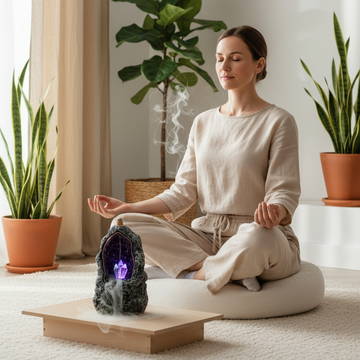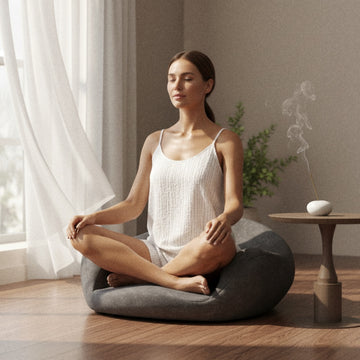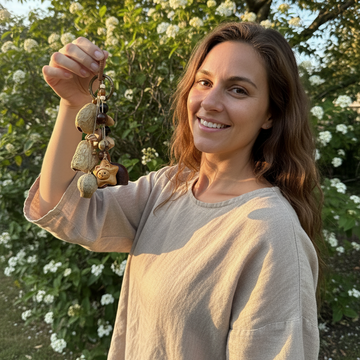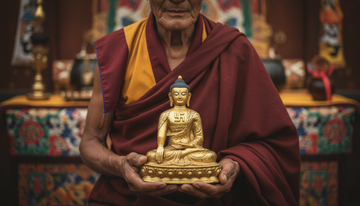Opening: The bend in my road
For months I woke at 3 a.m., staring at the ceiling. One evening I sat by the window and placed attention on the cool thread of air at my nostrils. After three minutes, the world hadn’t changed, but I could see my anxiety before I reacted. That’s when the effects of meditation began for me.
1) What “effects” really mean (simple terms)
-
Immediate: breath and posture help the nervous system lean from alert to repair, easing stress.
-
Short-term: better focus training and emotion regulation; a bedtime body scan invites sleep.
-
Long-term: less fusion with thoughts, more cognitive flexibility and self-kindness.
It’s not magic—it’s the compounding of drift → notice → return.
2) The effects of meditation (benefits in daily language)
Focus & clarity with breath awareness;
Stress relief & emotion regulation—seeing arise–stay–fade;
Sleep support via body scan;
Body awareness—responding to discomfort instead of bracing;
Relationships & compassion with loving-kindness;
Creativity & insight—space for perspectives to shift.
(Friendly note: these are common patterns, not medical advice. If you’re dealing with trauma or clinical concerns, please work with a professional.)
3) Practice → effect quick map
Breath awareness → steadier attention;
Body scan → relaxation & sleep readiness;
Walking meditation → channels restlessness;
Loving-kindness → softens harsh self-talk & warms relationships;
Open monitoring (after basics) → less stickiness to thoughts.
4) Signs your meditation is working
You detect distraction sooner and return more kindly;
Proper meditation posture feels easier;
You pause for three breaths before reacting;
Falling back asleep is easier (meditation for sleep and insomnia);
Deep-work focus improves;
Attendance is steady (beginner meditation steps happen daily);
In conflict, you see first, then respond.
5) Make the effects show up: an 8-week plan (how long to see results)
Weeks 1–2: 5–8 min breath awareness daily; add one three-minute meditation anytime; log returns & streak.
Weeks 3–4: 5 min morning + 5 min evening; add one 30-sec pause before meetings; walking meditation 5–10 min on weekends.
Weeks 5–6: one 10–12-min sit; add body scan 3–5 min at night; start loving-kindness 2–3 min.
Weeks 7–8: 10 min morning + 10 min evening; keep the “ten-breath doorway” before meetings; weekly review of mood, sleep, focus (1–10).
6) Self-tracking metrics
Attendance; number of returns; peak anxiety/anger (1–10); sleep latency & nocturnal awakenings; ratio of impulsive replies vs. breath-then-reply.
This dashboard reflects the effects of meditation better than chasing a “no-thought” score.
7) Troubleshooting
Too many thoughts → light labels (“thinking/hearing/tight/worry”) → return.
Drowsy → try mornings/half-open eyes; walk 3 min first.
Restless/pain → elevate hips or switch to a chair (how do you meditate properly on a chair); ten slower exhales to bleed pressure.
No time → three minutes midday + five-minute scan at night.
Chasing fireworks → measure attendance, returns, and pauses instead.
8) My reflections: three small scenes
Insomnia: I stopped chasing sleep and did a body scan under the blanket—often asleep by the thighs.
Pre-meeting nerves: I count ten even breaths at the door and walk in steady.
Conflict: chest heat and throat tightness are my warning lights; I pause ten seconds, sip water, then state my need.
Meditation didn’t remove the weather; it taught me where to place my heart when winds rise.
9) FAQ (long-tails embedded)
How long to see results? Often 2–4 weeks for easier returns, 8–12 for steadier shifts.
Morning vs night meditation? Choose what you’ll keep; both is great.
Do I have to cross my legs? No—chair practice is fully valid.
Music? Prefer natural ambience at first.
Clinical concerns? Pair practice with professional care.
Closing
The lasting effects don’t come from a single mystical sit but from ordinary breaths, returned to often. When you know you can return, you can walk through weather.













